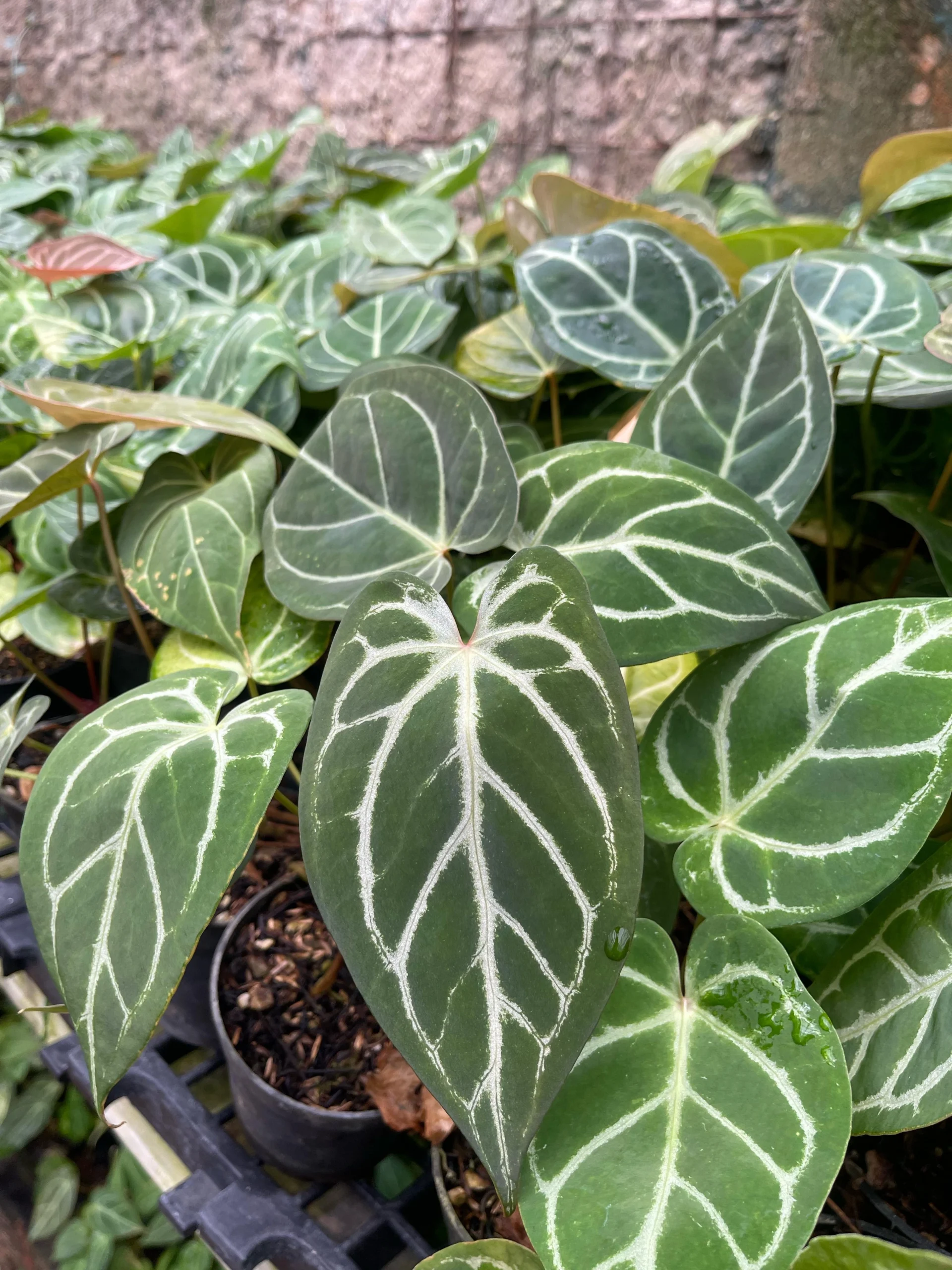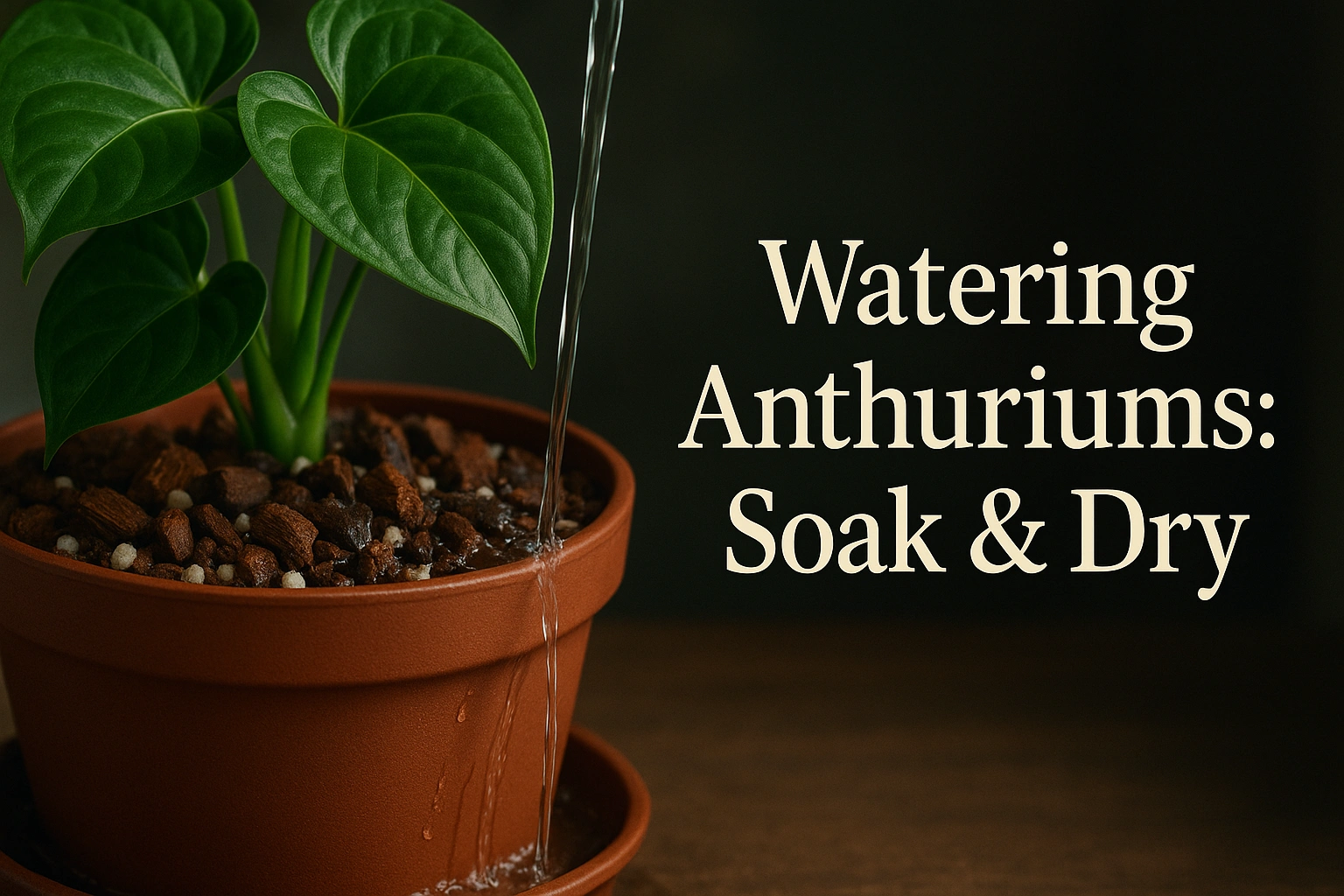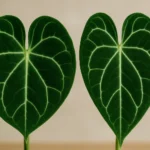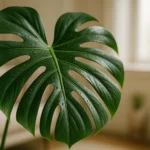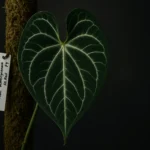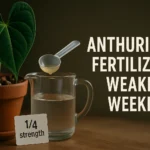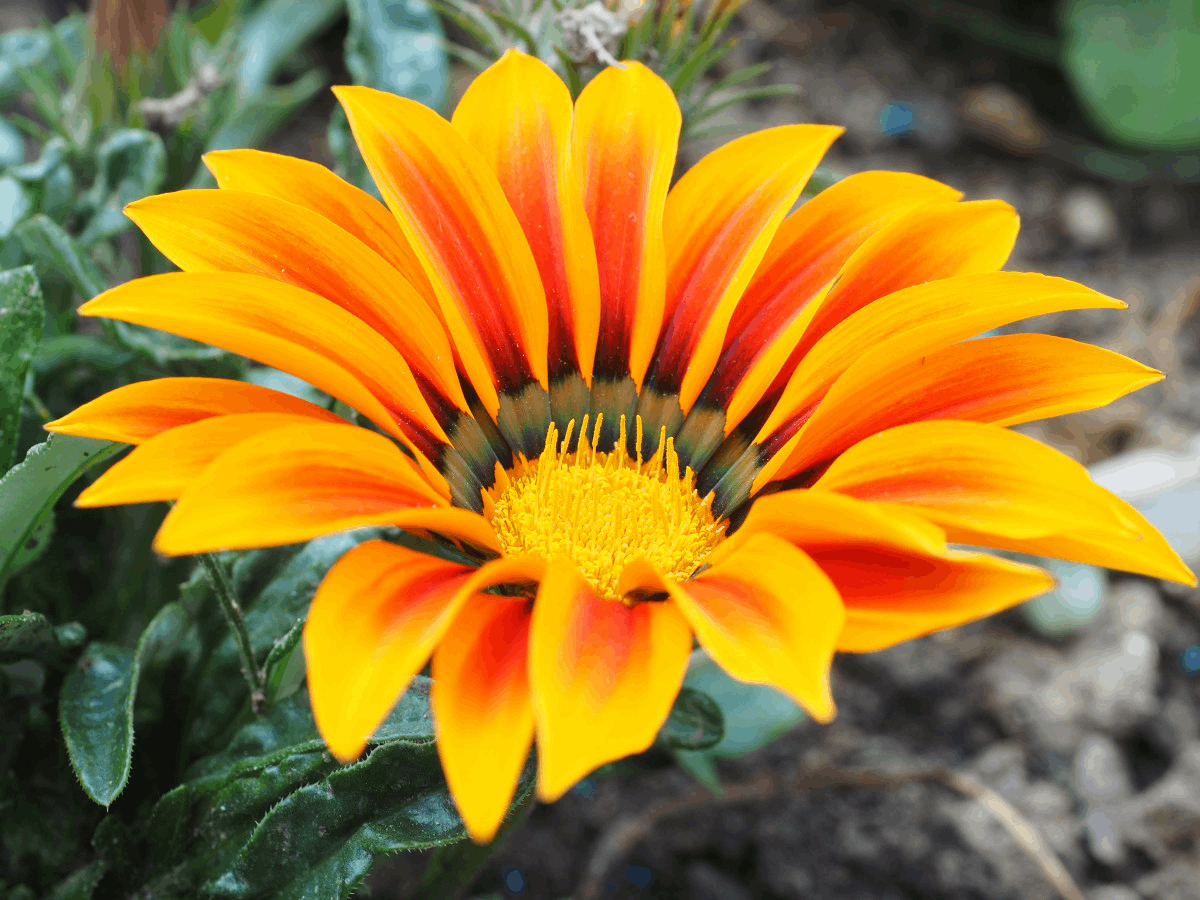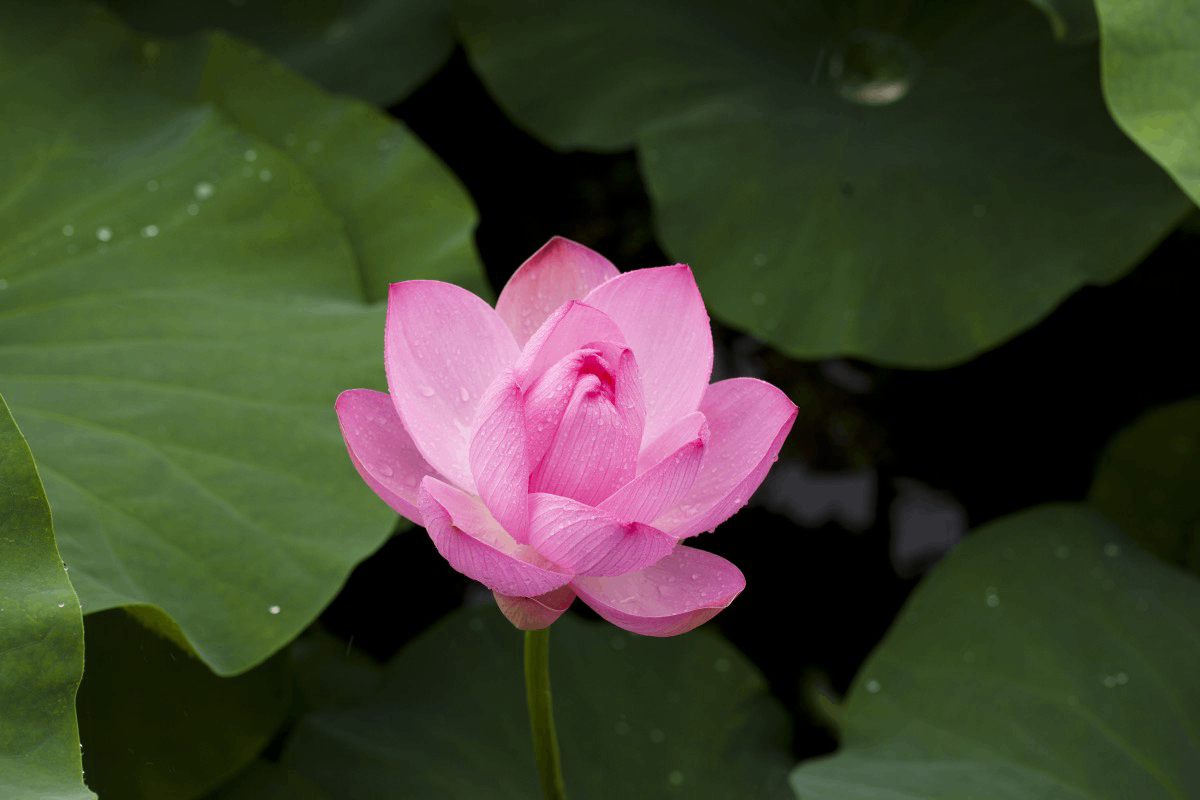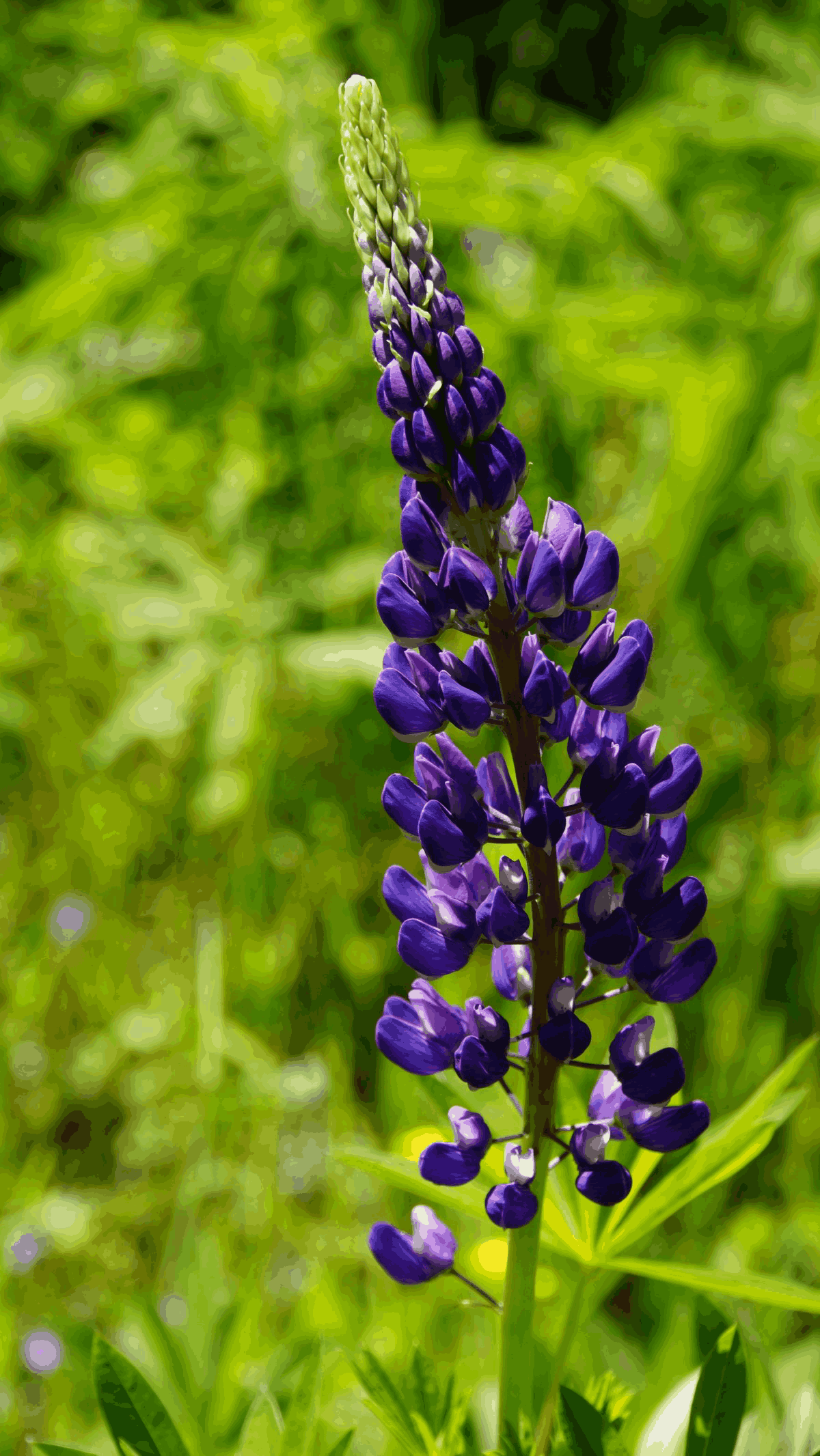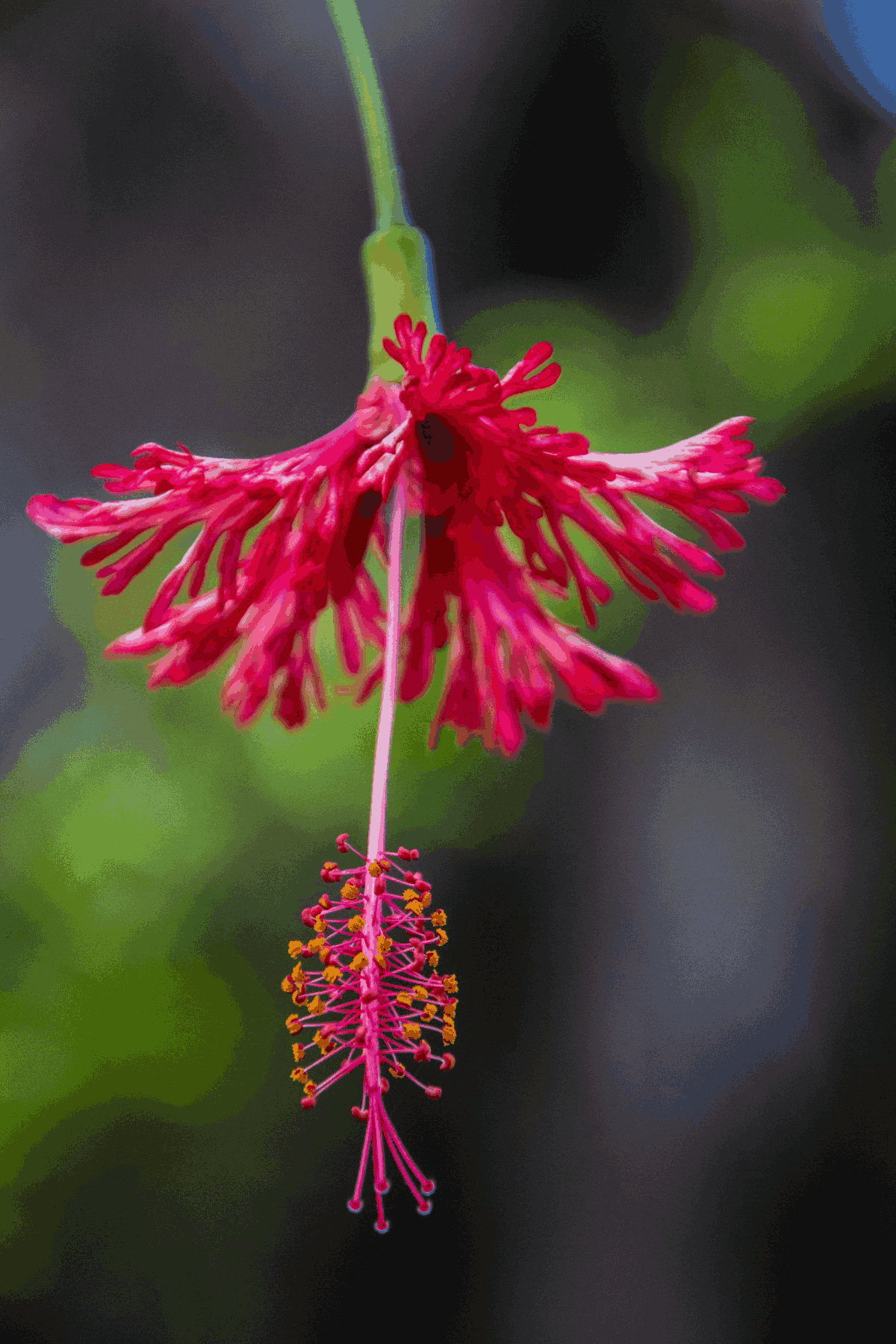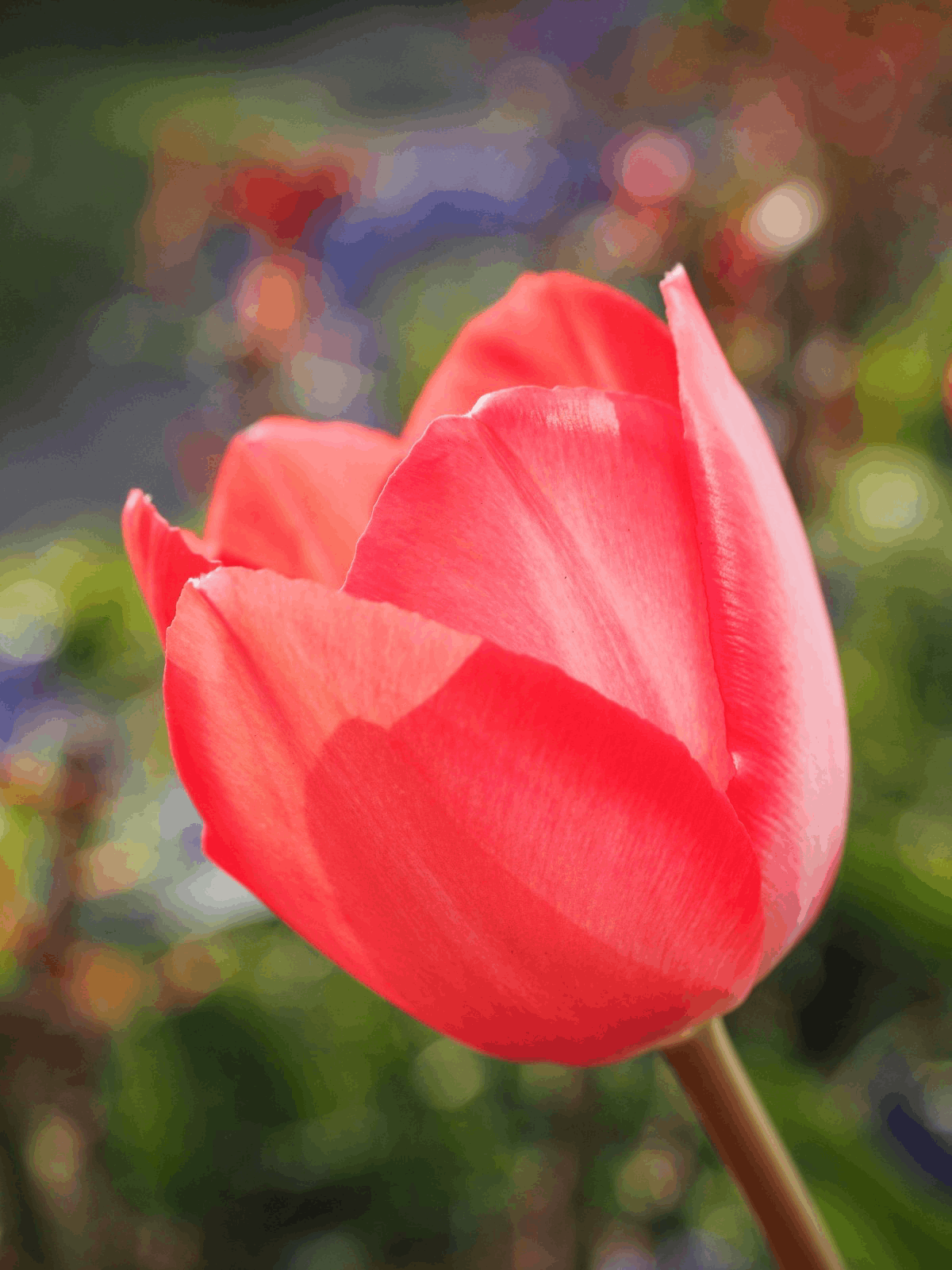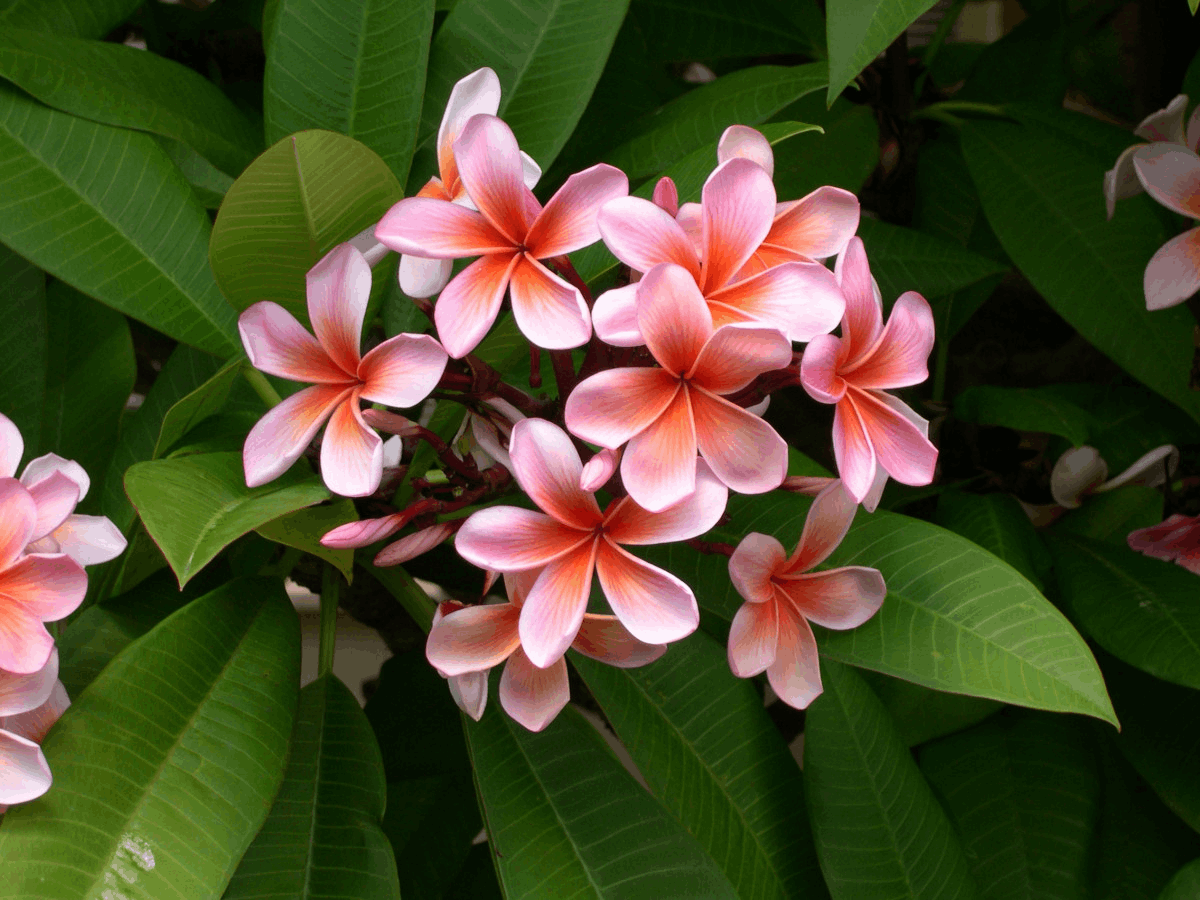GreenWandering
“Discover the world’s most unique leaves.”
Why Proper Watering is So Critical for Anthuriums
To understand their needs, we must look to their origins. Most collector anthuriums are epiphytes or hemiepiphytes, meaning they grow on other trees in the rainforests of Central and South America. As noted by botanical authorities like Kew’s Plants of the World Online, their roots are not like those of a typical terrestrial plant. They are thick, fleshy, and adapted to cling to bark, experiencing cycles of drenching rain followed by excellent airflow that quickly dries them. They are not designed to sit in dense, soggy soil.
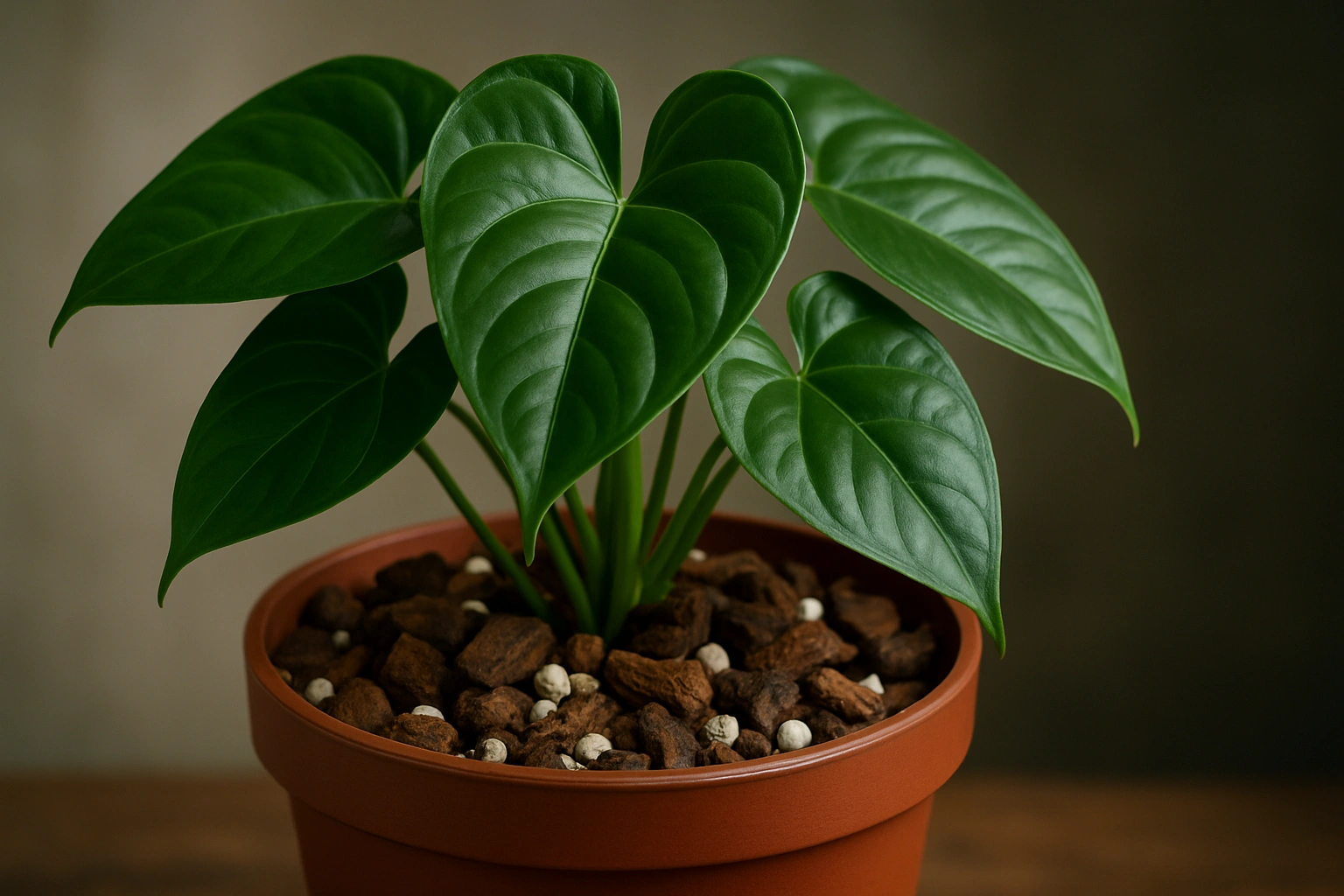
Reading the Signs: Is Your Anthurium Thirsty or Drowning?
Signs of an Under-Watered Anthurium
An underwatered anthurium is often dramatic but easily fixed. The plant is trying to conserve water. Look for:
- Wilting or Drooping Leaves: The most obvious sign. The leaves lose turgidity and feel soft and limp. The petioles (leaf stalks) may begin to bend.
- Curling Leaf Edges: Leaves, especially on thinner-leafed varieties, may curl inwards to reduce surface area and minimize water loss through transpiration.
- Dry, Crispy Brown Tips: This can also be a sign of low humidity, but when combined with bone-dry soil, it points directly to thirst.
- Soil Pulling Away from the Pot: The potting mix becomes so dry that it shrinks and creates a gap around the edge of the pot. This is a sign of severe dehydration.
- Lack of Growth: A chronically underwatered plant will halt all new growth to conserve energy.
Signs of an Over-Watered Anthurium
Overwatering is more subtle at first and far more dangerous. The damage happens below the soil before visible signs appear, making early detection crucial. Watch for:
- Yellowing Lower Leaves: This is the classic symptom. One or two lower leaves turn a bright, sickly yellow but often remain plump and don’t fall off easily. This is different from the pale yellowing of nitrogen deficiency.
- Mushy Stem Base: The base of the plant at the soil line feels soft, squishy, or even turns black. This is a clear sign that rot has set in.
- Fungus Gnats: These tiny, annoying flying insects love to lay their eggs in consistently damp topsoil. A persistent infestation is a red flag.
- A “Heavy” Pot and Damp Soil: The pot feels surprisingly heavy for its size days after watering, and the soil surface remains visibly damp.
- Edema: Small, water-filled blisters or bumps may appear on the undersides of leaves as the roots absorb more water than the leaves can transpire.
The Foundation: Soil, Pot, and Aeration
Perfect **moisture management** starts before you even pick up the watering can. Your choice of soil and pot is your first and most important line of defense against overwatering.
Choosing The Right Pot
The pot itself plays a massive role. **Terracotta** is porous and allows soil to dry out faster, making it a forgiving choice for those prone to overwatering. **Plastic or glazed ceramic** pots retain moisture longer, requiring less frequent watering but a more watchful eye. For ultimate root visibility, many collectors use **clear plastic orchid pots**. These allow you to see moisture levels and root health directly. Regardless of material, **abundant drainage is non-negotiable**. If a decorative pot has no holes, use it as a cachepot and keep the anthurium in a nursery pot that can be removed for watering.
The Ideal Aroid Mix for Substrate Aeration
Ditch the standard, dense potting soil. Anthuriums require a chunky, airy, well-draining mix that provides excellent **substrate aeration**. A popular and effective DIY recipe includes:
- 1 part Orchid Bark (medium grade): The backbone of the mix, it creates large air pockets for roots to breathe.
- 1 part Perlite or Pumice (#3 or #4 grade): These inorganic volcanic rocks prevent compaction and improve drainage.
- 1 part Coco Coir or Peat Moss: The moisture-retentive component. Coco coir is generally preferred for its neutral pH and slower decomposition.
- Optional: A handful of horticultural charcoal to help absorb impurities and keep the mix “sweet.”
This type of mix allows water to flow through easily while holding onto just enough for the roots to absorb, and most importantly, it lets oxygen—the key to healthy roots—penetrate deep into the pot.
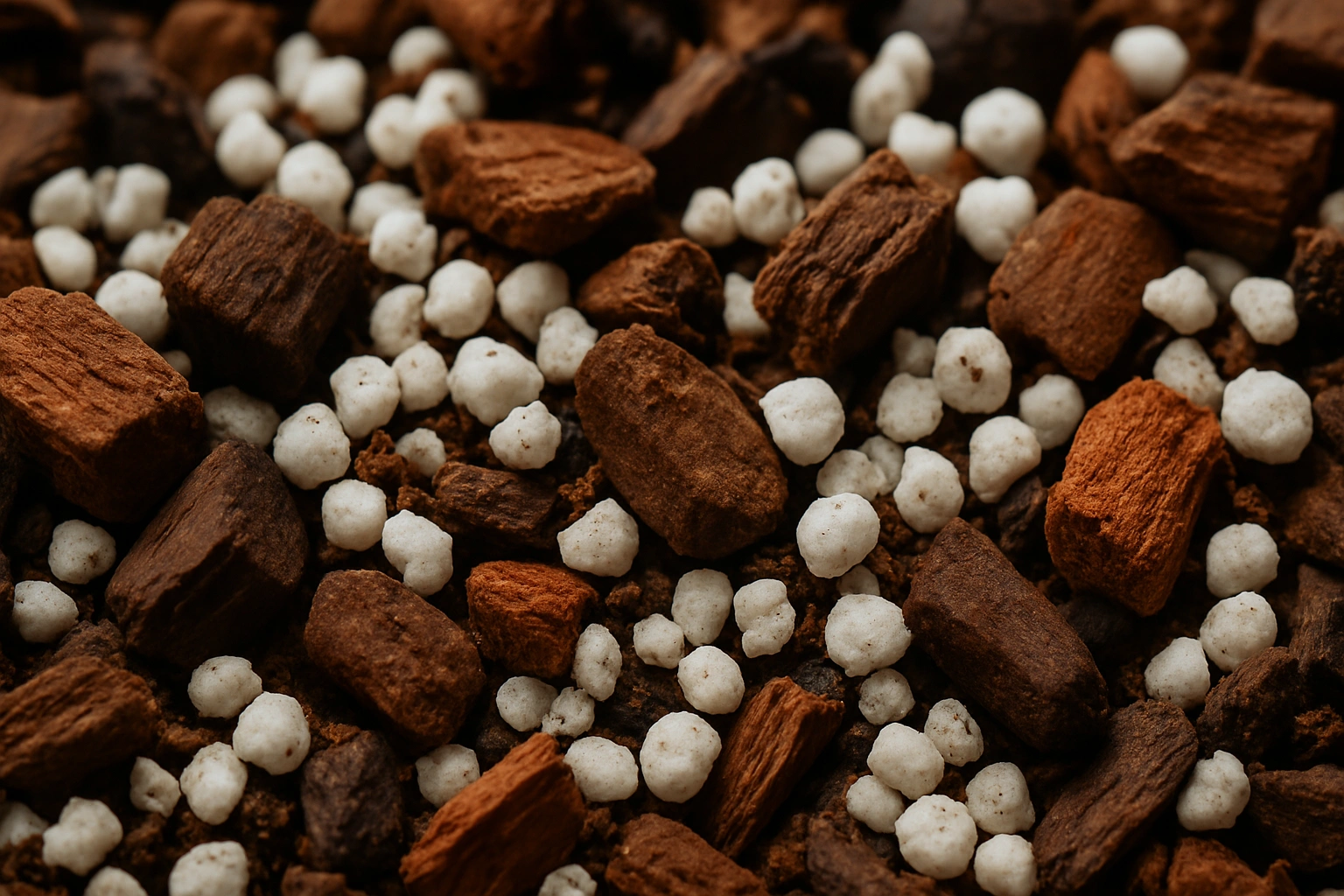
How to Water Anthuriums: The Right Technique
The best method for **watering anthuriums** is the ‘soak and dry’ technique. This mimics a tropical downpour and ensures the entire root system gets evenly hydrated.
The ‘Soak and Dry’ Method
- Check the Soil: First, and always, confirm the plant actually needs water. Don’t rely on a schedule. Use the finger test—if the top 1-2 inches are dry to the touch, it’s time. You can also learn the weight of the pot when it’s fully watered versus when it’s dry.
- Thoroughly Soak: Take the plant to a sink or tub. Slowly pour lukewarm water over the entire surface of the soil. Continue until water begins to flow freely from all the drainage holes. This ensures there are no dry pockets.
- Let it Drain Completely: This is the most important step. Allow the pot to drain for at least 15-30 minutes, or until it stops dripping. Never, ever let it sit in a saucer of excess water, as this will re-saturate the soil and suffocate the roots.
- Return to its Spot: Once it has stopped dripping, you can place it back in its decorative pot or saucer.
Factors that Influence Watering Frequency
Why is a schedule so unreliable? Because a plant’s water needs are constantly changing based on its environment:
- Light: The more bright, indirect light a plant receives, the more it photosynthesizes and the more water it uses. A plant in a bright spot will need water far more often than one in a lower-light corner.
- Temperature & Humidity: Higher temperatures and lower humidity increase the rate of transpiration, causing the plant and soil to dry out faster.
- Season: Most anthuriums have a distinct growing season (spring/summer) and a dormant or slower period (fall/winter). During active growth, they need more water. In winter, you must reduce watering frequency significantly.
- Pot Material and Size: As mentioned, terracotta dries faster than plastic. A smaller pot will dry out much more quickly than a large one.
For a more detailed look at plant aesthetics after watering, see our guide on anthurium photography.
Troubleshooting Common Watering Problems
| Symptom | Likely Cause | Solution |
|---|---|---|
| Yellow Lower Leaves | Overwatering | Allow soil to dry out completely. Check for root rot. Improve airflow. Reduce watering frequency. |
| Limp, Droopy Leaves | Underwatering | Water thoroughly using the soak and dry method. The plant should perk up within a few hours. |
| Brown, Crispy Leaf Edges | Low Humidity or Underwatering | Increase humidity with a humidifier. Check soil moisture more frequently. Ensure water quality is good. |
| No New Growth | Chronic Underwatering or Low Light | Ensure consistent watering and move to a location with brighter, indirect light. |
| White Crust on Soil/Pot | Mineral Buildup from Tap Water | Flush the soil thoroughly with distilled or rainwater. Switch to a purer water source if possible. |
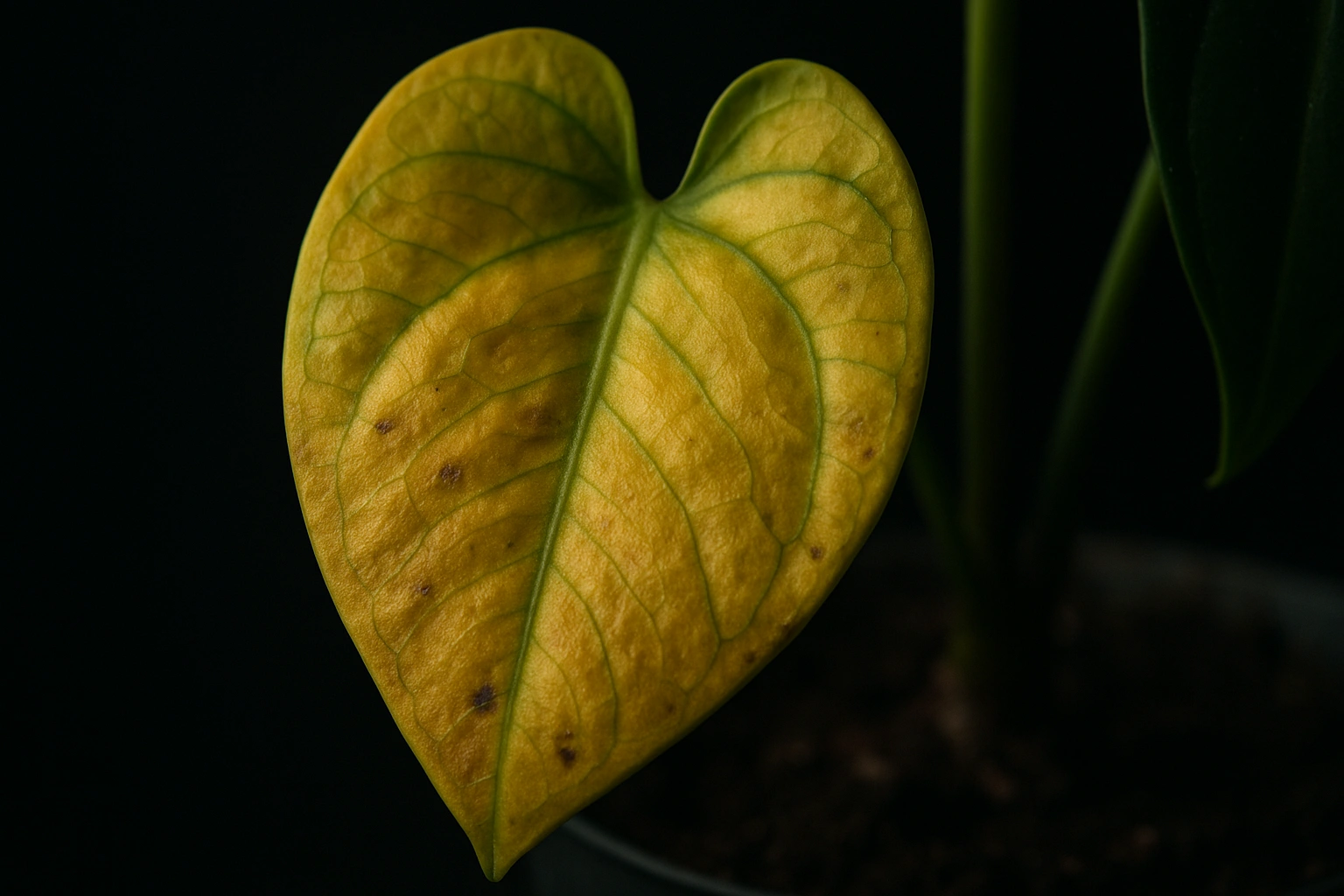
Frequently Asked Questions (FAQ)
How often should I water my anthurium?
There’s no fixed schedule. Water only when the top 1-2 inches of the potting mix are dry. This could be weekly in summer or every 2-3 weeks in winter, depending on your home’s conditions, light, pot type, and soil mix.
What are the first signs of root rot in anthuriums?
The earliest signs are often yellowing lower leaves that don’t fall off, and soil that stays wet for too long. If you suspect rot, you must unpot the plant and inspect the roots. Healthy roots are white and firm; rotten roots are brown, soft, and mushy.
Is it better to underwater or overwater an anthurium?
It is always better to underwater than to overwater. An underwatered plant will show dramatic signs like wilting but can often be revived with a good soak. An overwatered plant develops root rot, which is much harder to recover from and can often be fatal. Expert guidance from sources like the Royal Horticultural Society (RHS) supports this approach.
Should I mist my anthurium to help with watering?
Misting is not a substitute for proper watering. It only temporarily raises the humidity around the leaves and does not provide water to the roots. Consistent soil moisture and high ambient humidity (from a humidifier) are more effective.
Can I use tap water for my anthurium?
Yes, in most cases, tap water is fine. However, anthuriums can be sensitive to the chlorine and minerals in very hard water. If you notice brown, crispy leaf tips, try letting your water sit out overnight before using it, or switch to filtered or rainwater.
Do I need to change my watering routine in the winter?
Yes, absolutely. In winter, anthuriums slow their growth due to lower light and cooler temperatures. They will use water much more slowly. You must reduce your watering frequency significantly. Always check the soil; do not water on a schedule.
Why are my anthurium’s aerial roots drying up?
Aerial roots are adapted to absorb moisture from the air. If they are shriveling, it’s a strong sign that your ambient humidity is too low. While this isn’t directly a soil watering issue, it indicates the plant’s overall environment is too dry for its liking.
Conclusion: Water with Confidence
You now have the comprehensive knowledge to move beyond surviving and into thriving. Embrace the process, listen to your plants, and enjoy the reward of stunning, healthy foliage that is a testament to your excellent care.
